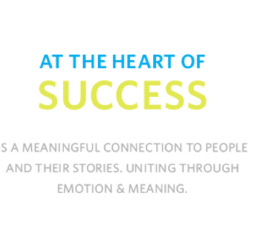
Marketing Lessons from the Post-Advertising Summit
Shaken, not stirred. I’m not talking about James Bond’s drink preference, but the state of the advertising world. A “seismic shift in marketing” was how Simon Kelly, COO of agency Story Worldwide and host of last week’s Post-Advertising Summit in NYC explained the state of affairs. An eclectic group of advertising creatives and marketers gathered to discuss the impact for the future where traditional advertising tactics are dead or dying. The good news: like a creative menu at a martini bar, there’s many new-fangled ways to acceptably serve up marketing with impact. Here are five takeaways from the Summit to help you consider how.
1. We’re all media companies.
Advertising Age columnist Simon Dumenco told an engaging and important story that illustrated the speed of media and publishing today. He found himself in a NYC coffee house during last year’s earthquakes. While he felt the café rumble, he didn’t realize what was happening until he simultaneously discovered that the quake was already trending on Twitter. Seismic waves were traveling from the epicenter of the quake at a rate slower than social media reporting! CNN couldn’t even respond as fast. This is just one simple example of how we’re all reporters, editors and publishers in a new media world where you can have impact. In the process we leave a “digital vapor trail” through the little pieces of information that we post on Twitter, Pinterest and Facebook. It is our record as media company of one – representing our brand and identity in a manner available for posterity in the Library of Congress. I’d add: it’s a great example of how we’re all storytellers.
2. We’re living in the era of the underdog.
In such an age, where speed and access via social technology has made everyone a media maven, power is with the people. It could be argued that creativity and reaction time are the coveted marketing skills and that the wieldier systems and processes held by larger, traditional organizations and agencies can pose limitations. Today, everyone has access and opportunity to market – regardless of budgets. “Your audience is a channel, an audience of audiences,” according to marketer, author and social media power influencer Mark Schaefer. So, in today’s world everyone has the potential to be a marketer — all you need is an ISP and something worth talking about. A story worth telling provides power to an individual marketer that can rival the big advertising guns. And maybe even be more nimble and flexible in the approach.
3. Content is the new creative.
Presenting content that is interesting and entertaining is the new marketing formula for connection. The concept: attract attention and engagement around a piece of information or an idea that will give people something to talk about. And share. Consider this: everyone can create content. But take heed because content is abundant. We’re operating in an information overload that is dizzying — creating noise that makes it hard to stand out and be heard. To have a media presence, therefore, according to Andrea Miller, Founder and CEO of YourTango, “requires investment. It’s not sufficient to simply push content anymore. You must show personality and actively cultivate content that engages. And that takes time.” Time to learn new skills as editors and publishers, with an eye on the overall desired brand experience. In response, many brands (notably Coca-Cola) are transitioning their marketing departments from ones built to advertising and broadcast to a new design focused on developing interesting, entertaining content and stories.
4. Opportunity abounds for brand storytelling.
“We live in an age of hyperpassivity,” according to Bluefin Labs Tom Thai, whose organization tracks social TV, where the couch potato is still sitting there but tweeting away. We’re watching TV with smartphone in hand, in a world where more people avoid spoilers and, instead, engage in real-time conversation. The result is a multi-dimensional experience where more people are (surprise!) watching media in real time. This is just one example that illustrates the opportunity to expand and communicate a brand’s narrative. There’s a growing trend to integrate media traditionally reserved for entertainment – incorporating visuals, video and gaming – and serve up appropriate ways to give people an active role in your story. Creating shared narrative (what I believe is a fundamental goal of branding!). It also means, thankfully, we don’t have to broadcast the same ole basic message all the time. Instead, we can select different parts of our brand story to share at different touch points – all designed to convey a larger, coherent message.
5. Co-creation is real engagement.
The goal of great marketing content is to create something so interesting to people that they want to share it. As part of the Summit, attendees collaborated on creating content for the sensational reality-bending news media outlet Weekly World News. In about an hour, we created the strategy and concept for an app that enabled everyday people to be reporters – actual participants in recording and sharing the strange and paranormal they encounter. Think your neighbor is an alien plotting an attack of earth? Here’s a way to report it. The app provides a way for people to participate in an activity that not only conveys the core trait of the brand but enables them to actively claim a role in it. Because to the Weekly World News reader “life is stranger than fiction.”
Indeed. And the changing marketing world does not fail to disappoint either. As a marketer, we can have a field day connecting with people by creating something for every desired action and experience. A marketing world in which your imagination (and not your wallet) is the only constraint.
How will you get started?



